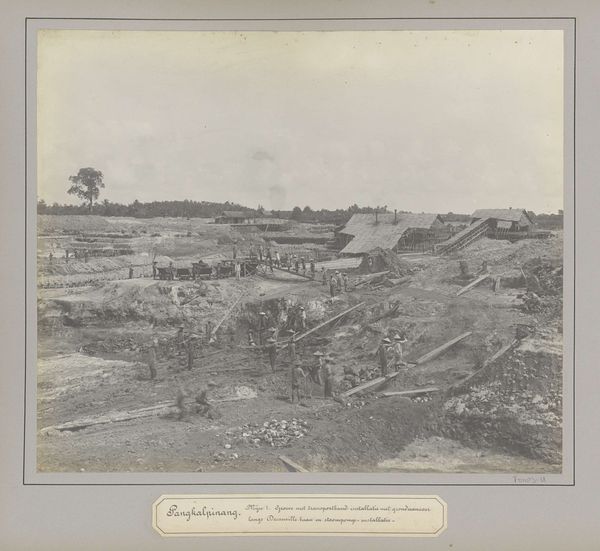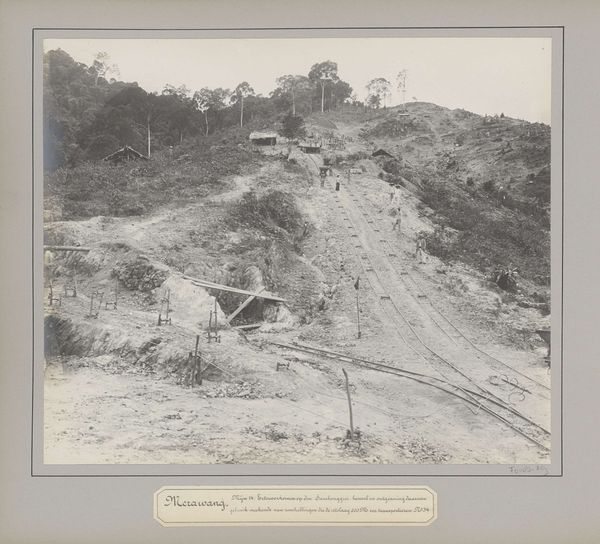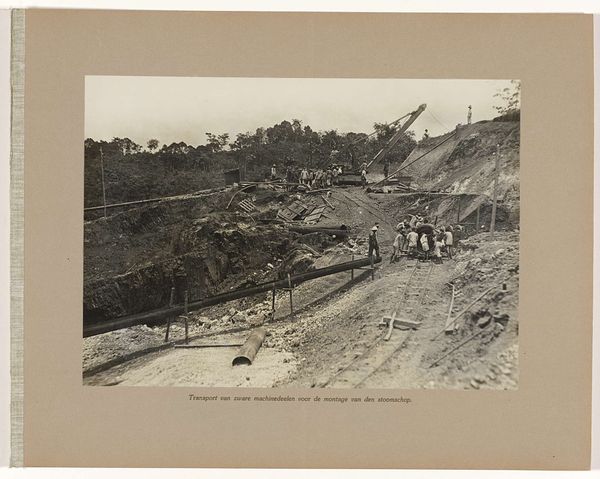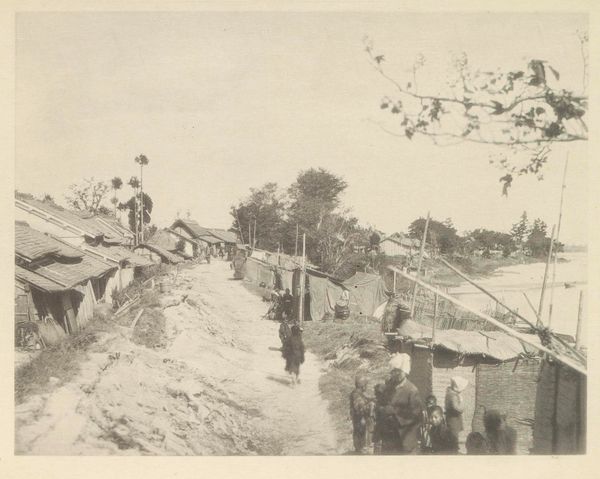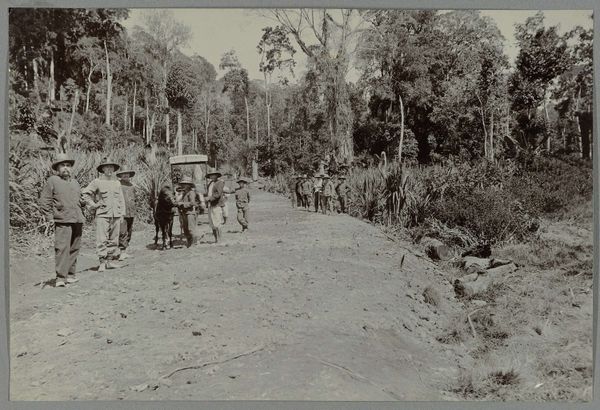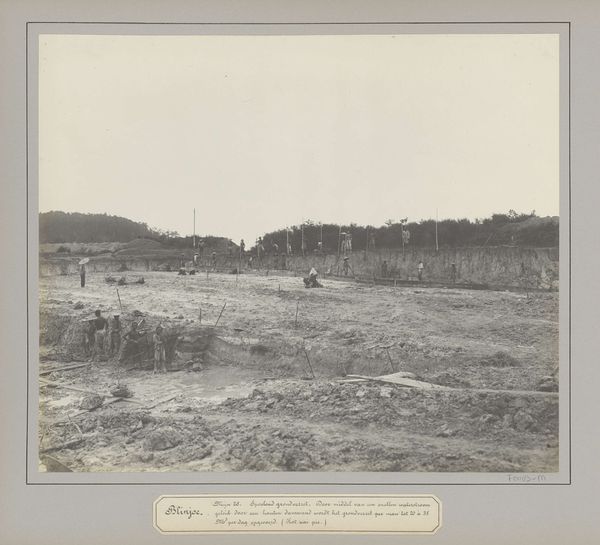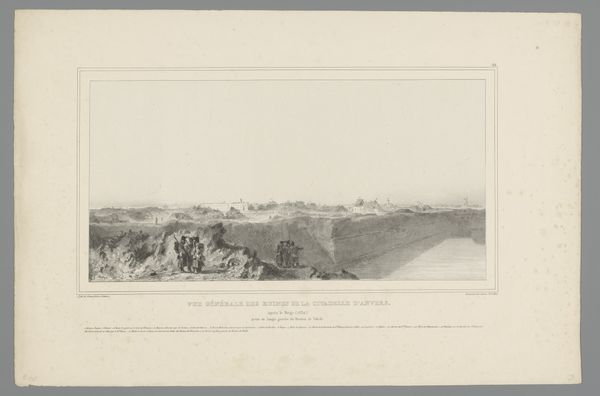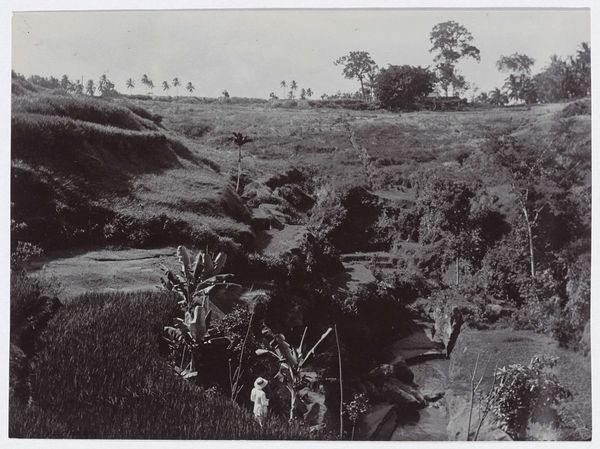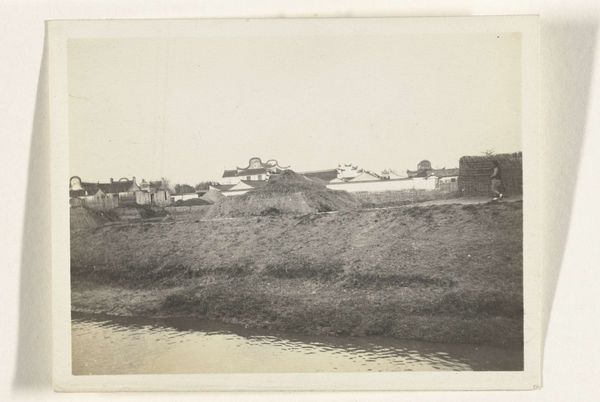
Chinese contractarbeiders voeren grond met tinerts af in draagmanden 1907 - 1919
0:00
0:00
photography, gelatin-silver-print
#
landscape
#
photography
#
orientalism
#
gelatin-silver-print
#
genre-painting
#
realism
Dimensions: height 238 mm, width 284 mm
Copyright: Rijks Museum: Open Domain
Editor: Here we have a gelatin-silver print from somewhere between 1907 and 1919, housed at the Rijksmuseum, showing "Chinese contract labourer transporting earth with tin ore in carrying baskets.” The photograph, with its landscape format, is striking because of the sheer number of workers seemingly ant-like on the mound. What can you tell us about this piece? Curator: The photograph immediately raises questions about the history of labor and colonialism. The scene depicts Chinese indentured labourers, a system that replaced slavery, essentially. This photographic document should encourage us to consider how colonial powers exploited workers and resources in places like Indonesia. Editor: It feels very distant from modern labor laws. Is this why we call it Orientalism? Curator: In part. It exoticizes and generalizes a region for Western audiences. Consider who commissioned or consumed this image. Was it meant as a neutral document or to reinforce particular views about labor and race in colonial contexts? How might that impact how we see the workers, the landscape? Editor: That reframes how I’m seeing it. Initially, I saw it as documenting a time and place. But the social dynamics introduce so many complex issues. Curator: Precisely. Look closely at the composition, the way the workers are arranged. Does it suggest equality, or does it reveal power dynamics? Consider how the photographer positioned themselves in relation to the subjects. What narratives are embedded in seemingly simple representations of labor? Editor: It is unsettling to think how this photograph could promote specific ideological ends and contribute to colonial narratives. I am very grateful to have this alternative viewpoint. Curator: Thinking critically about art's role in society makes us question how the legacy of colonialism persists today.
Comments
No comments
Be the first to comment and join the conversation on the ultimate creative platform.
